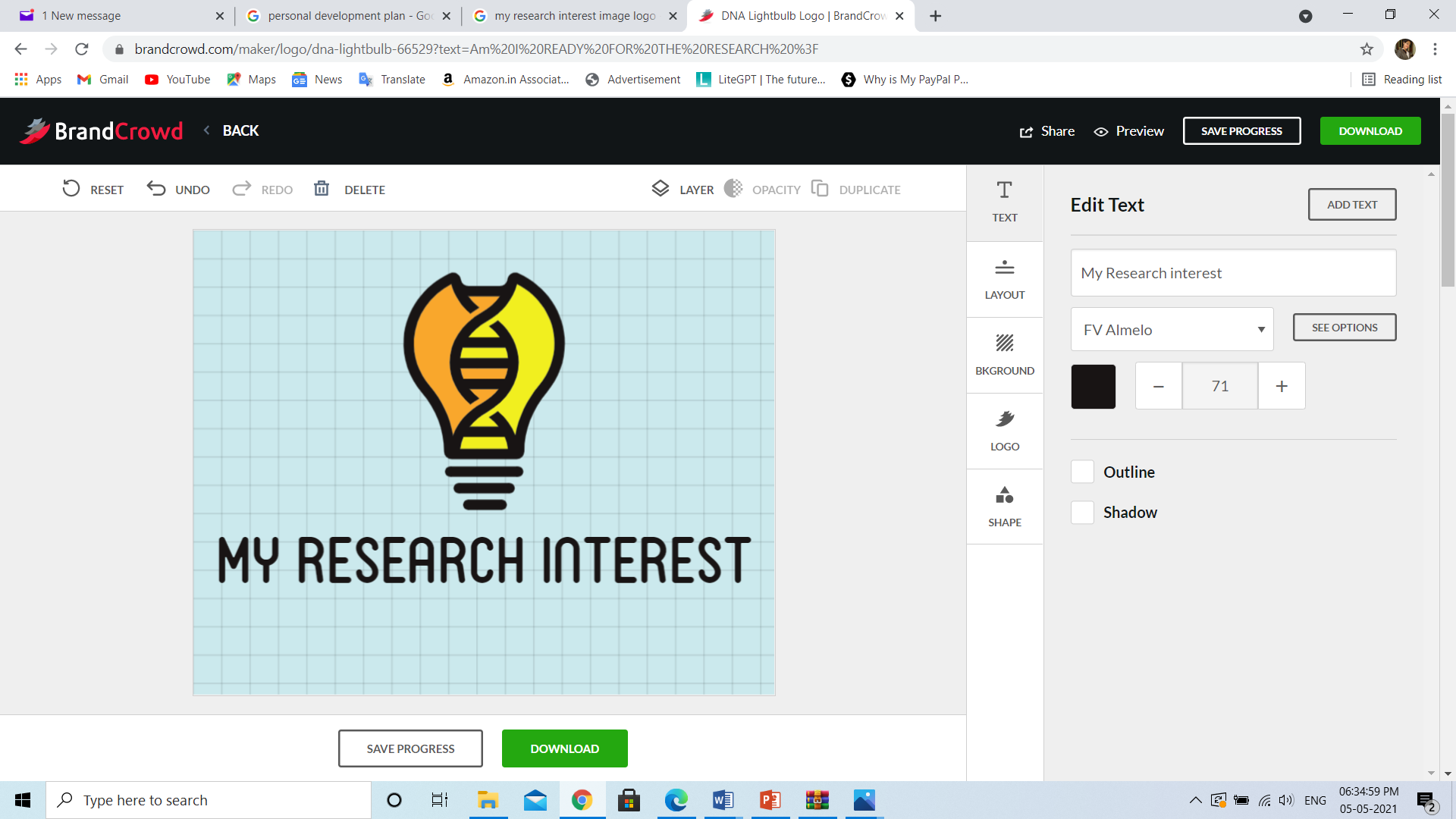LD7091 Assignment Sample – Research Methods for Professional Practice 2022
Part one: Reflective CPD
Personal Development planning is a method of developing action plans based on theory, awareness, education, and self-reflection. PDP varies from individual to individual as everybody chooses different career path leading to multiple professional paths. A personal development plan is necessarily required for building effective curriculum vitae for an employee (Lawrence, 2018).
Designing a proper professional plan helps in achieving career goals and assists in learning different skills that can enhance the professional career in the long term. Personal planning also plays an important role in handling and improving problems in the personal and professional path. Moreover, it improves communication skills, judgment skills, leadership qualities, and management strategies needed to face future challenges both on the personal and professional front.
1.1 About Yourself
Information Technology has been an emerging field for the past two decades. I developed a curiosity to pursue my career in IT field since I was in my school years. With growing ambition and knowledge in technology, I started my career by choosing IT as my bachelor’s background. The undergraduate study in technology increased the scope of planning my career more effectively.
I could get exposure to more information and skills related to the IT field. With advanced classes, I was able to discover that the IT field can help in developing careers in software engineering, software development, and design, and other management programs. While studying my undergraduate program, I referred to several books, articles, and journals, which helped me in gaining practical knowledge about the field.
My through a process related to information technology was different before I started my career in the IT field. But later on, as I began to gaining knowledge in the professional field, I could notice a drift in my thoughts. I became more concerned and passionate about the emerging trends in my technical background. Ethical considerations need to be taken care of when pursuing a career in the software field.
During my graduation, I could design various mobile applications and web-based applications that could reduce the manual entry effort. My module program also included an internship database package which was compulsory for all IT students. During my internship program, I was able to work in a real-time environment in a reputed IT company.
The internship program helped me in gaining various software skills and software management skills which will certainly help me in the future. The reason for choosing IT as my career was to develop a strong foundation in the technology department. Completing my bachelor’s program in IT was a wonderful experience. Hence I decided to study for Masters’s in Computing and Technology.
1.2 Objective
My short-term goal is to gain sufficient knowledge about Information Technology through various assignments, lectures, online classes, and journals. Moreover, my long-term goal is to pursue my professional career as a software developer or web designer in java.
My long-term aim will also help me in learning various computer languages that can develop different coding. After completing my post-graduation studies, I would like to join a software development learning program that will expose me to practical applications and the designing of software and other web-based applications. I also aim to design my own software development company in the near future.
1.3 Current Experience
The present era is all about technological advancements and innovations. With IT as an emerging field, I can excel in my career in the digital age. While completing my undergraduate degree, it was very clear in my mind that I will carry on my higher studies in the field of computing and technology.
As my interest grew in the technical ground, I started paying more attention to my lectures which provided me a vast knowledge about my career. With time I was able to understand the importance of Information technology in this emerging world. My parents, relatives, and my professors always supported me in choosing IT as my career route.
Further, I aim to relate the current and past studies when I start working as a professional IT individual in any organization. Once I complete my post-graduation degree, I will be overloaded with different job opportunities in the IT field. For excelling in my field, I want to acquire essential skills that will make my career bright and innovative.
1.4 Career Plan
A career plan is decided on the basis of what a student is interested in building their professional career in. My ultimate aim is to grow and develop in a technology background which is one of the most emerging trends in the world. According to Ohio University, the coming era is going is experience a trend of technology and robots (Black, 2016).
For establishing a technological world, we require students and candidates that can understand the significance of science and technology. Concentration and practical knowledge is the key to a bright future in IT professionalism. I should be aware of the latest trends, news, and movements associated with the IT field. This is the only way that can help me in visualizing my short and long-term goals.
Apart from my university lectures, whenever I get time, I connect with my professors to increase my knowledge through reference projects, books, and articles. My professors also help me in providing adequate knowledge required to pursue my career in Information Technology successfully.
IT is the future in the coming time. Hence I need to keep myself updated with ongoing changes in the technological world. Initially, I was unsure about my career goals, but after effective counselling and lessons, I was very eager to step forward in the IT field (Dawson, 2018). Time management was always my weakness since I was in school.
Though I am working towards managing time, but I need to plan out my schedule so that all the projects and activities are completed on time. As I am a passionate learner, I never hesitate to communicate with other students or my professors. I have always been clear about my goals and professional career, which encouraged me to be strong throughout my study period.
Conclusion
During my undergraduate studies, I was able to decide my long and short-term goals in the IT field. The technological background will provide me enormous exposure to multiple information, advice, and guidance. Moreover, it will also provide me various opportunities to showcase my talent and practical knowledge in the Information technology background.
Part Two: Achievements/Learning Log
Knowing various achievements during the study period is an integral part of the entire education. I developed various learning logs in the PebblePad software. In this part, I am disclosing different screenshots of the blogs and pages that I created using PebblePad.
2.1 My Research Interest
With increasing interest in the field of technology, I started my career in IT background. Once I completed my undergraduate program, I got a clear idea about pursuing my master’s in Computing and Technology. My research interest is based on software development and programming. For enhancing my career pathways, I started reading about IT and observing the patterns of other IT professionals.
2.2 Am I ready for the research?
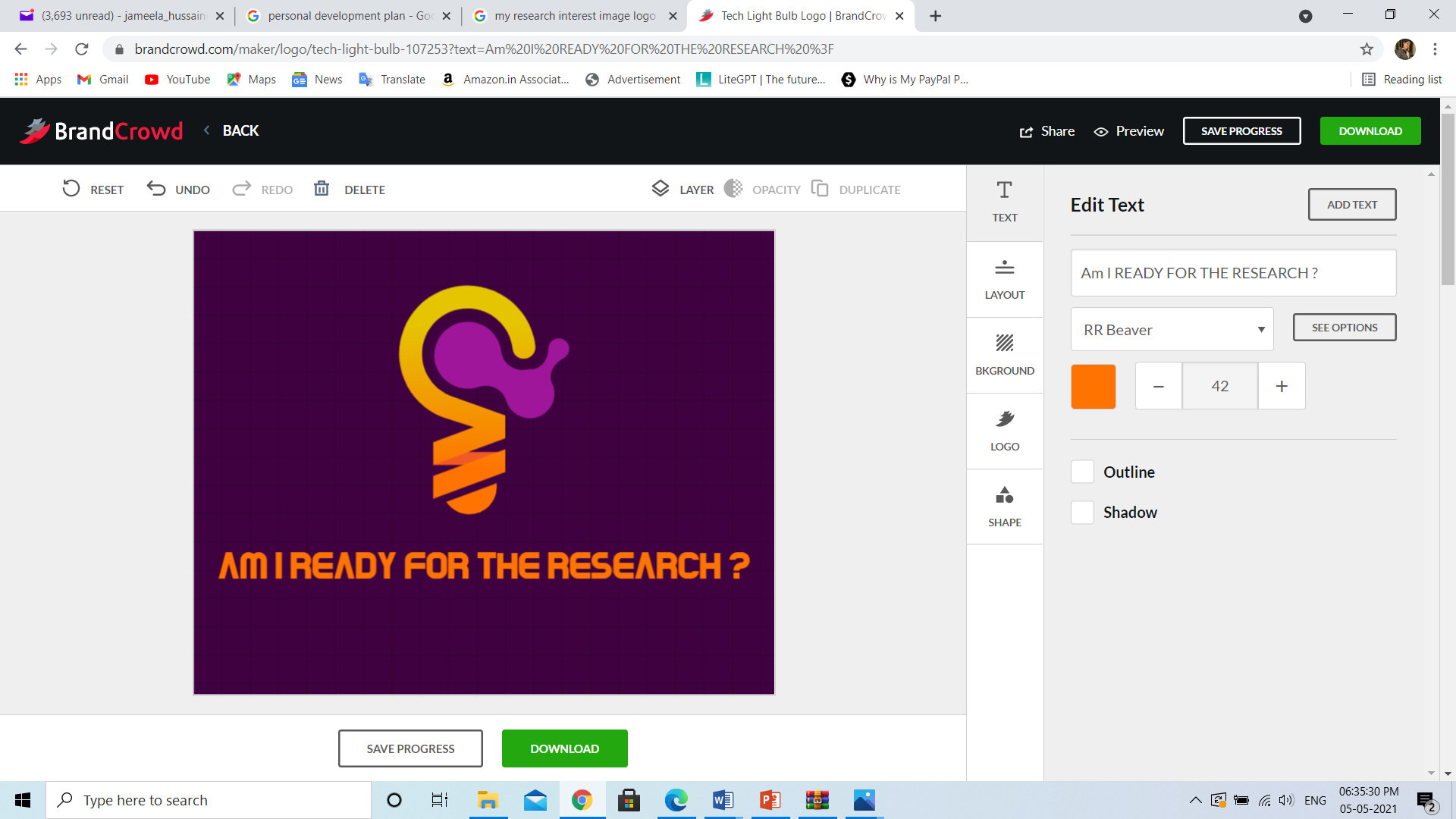
Research is an essential part conducted to enhance knowledge through books, online articles, journals, and lectures. The key method to complete any ongoing research is to ask various queries that can conclude the story. Once I was aware of the research topic, I incorporated skills and audit tools to plan my research both on a personal and professional front.
2.3 Personal SWOT Analysis
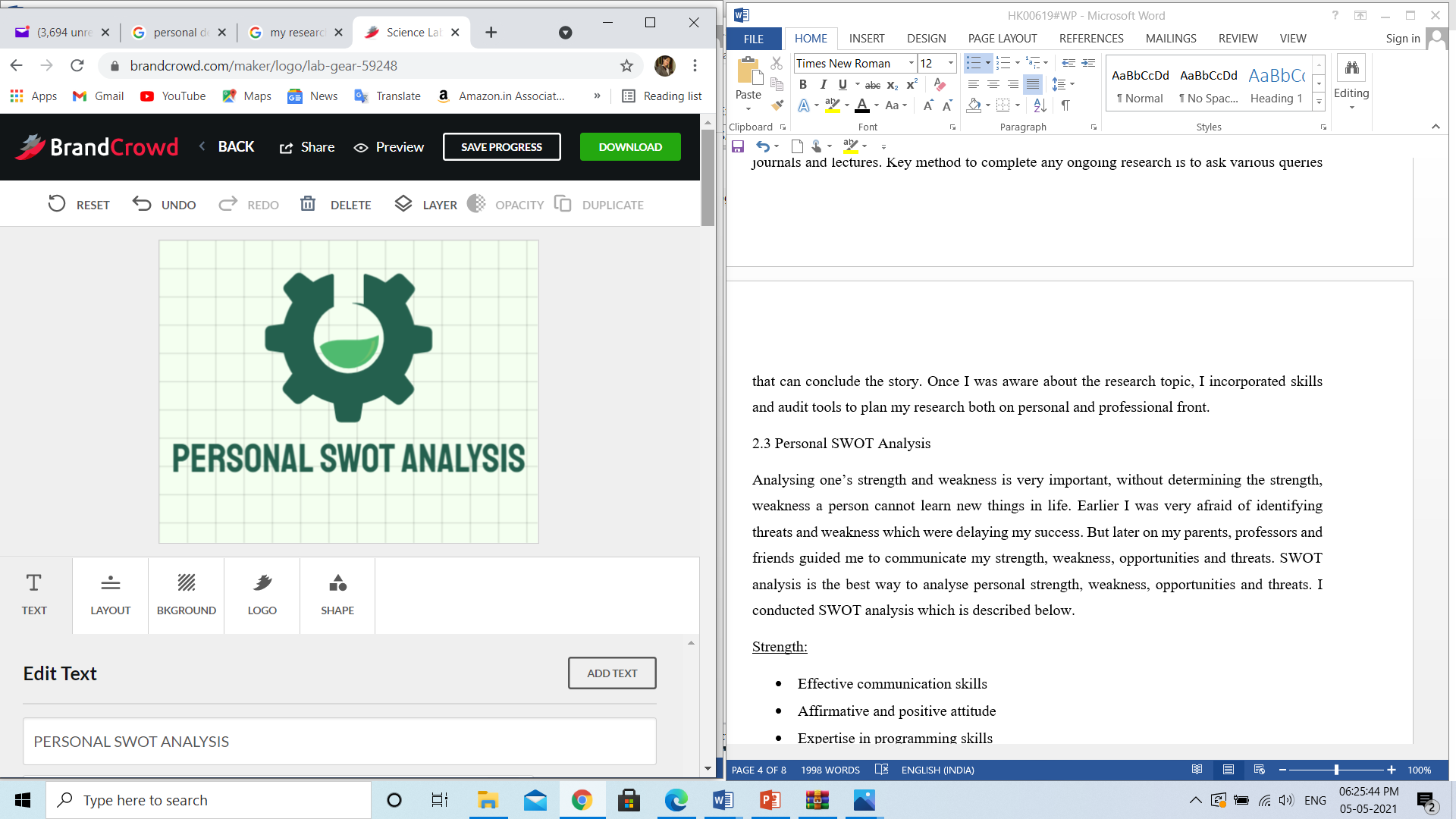
Analyzing one’s strengths and weakness is very important; without determining the strength, weakness a person cannot learn new things in life. Earlier I was very afraid of identifying threats and weakness which were delaying my success. But later on, my parents, professors, and friends guided me to communicate my strength, weakness, opportunities, and threats.
SWOT analysis is the best way to analyze personal strengths, weaknesses, opportunities, and threats. I conducted SWOT analysis which is described below.
| Strength
· Effective communication skills · Affirmative and positive attitude · Expertise in programming skills · Leadership and better management |
Weakness
Less practical experience in the IT field Mismanagement of time Inability to handle conflicts Poor stress management |
| Opportunities
· Acquired knowledge about database handling · Technological advancement in the field of IT. · Gained practical knowledge of software development. |
Threats
· Inadequate knowledge about software programming · Accumulative competition · Work pressure in IT-based organizations. · High cost of goods |
2.4 Literature Searching
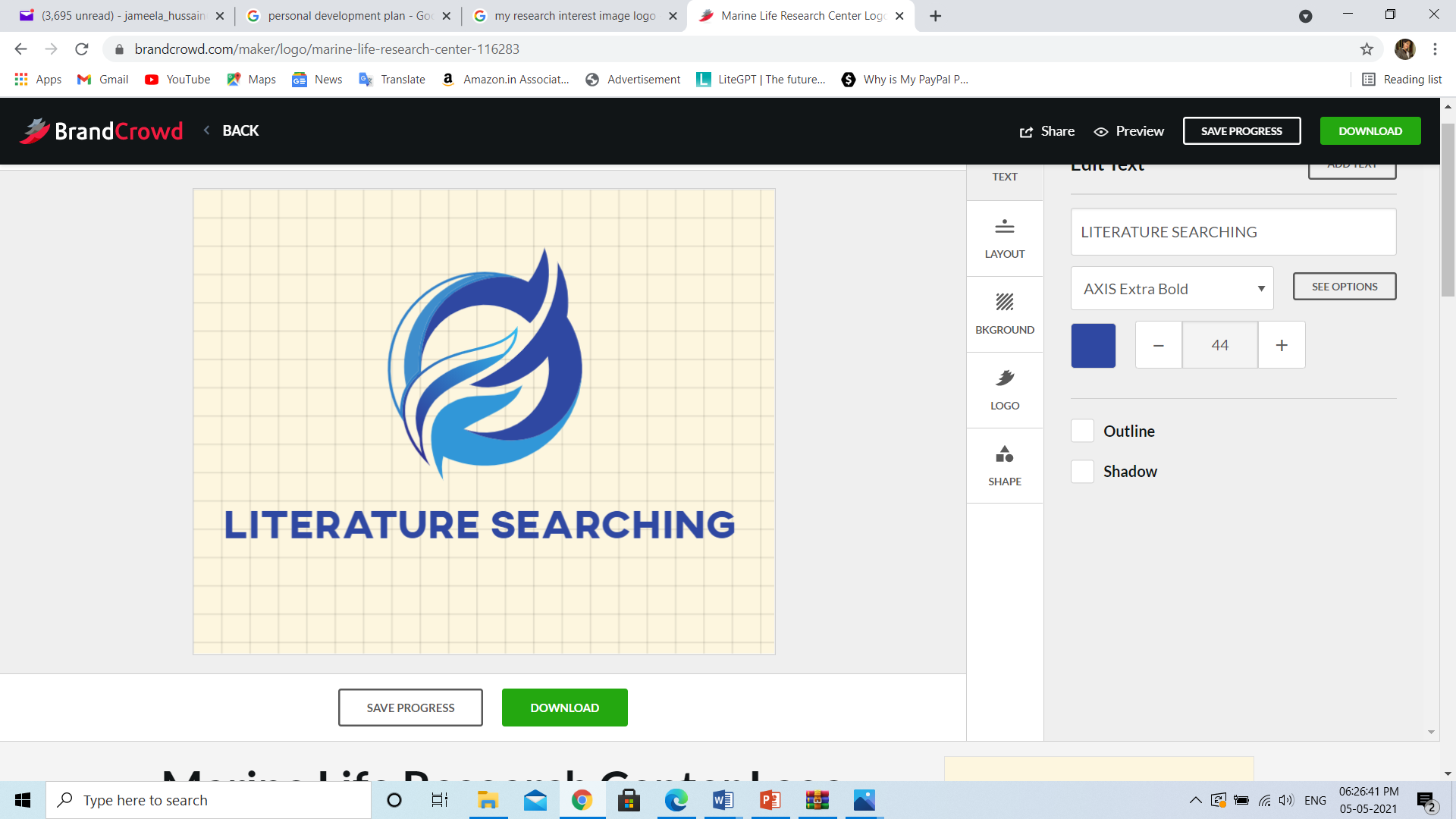
Literature searching is an integral part of the overall research process; further, it helps conduct an organized search for various literature topics. For performing successful literature research, it is essential to know what an individual is searching for. Creating a definite research strategy makes the research process very easy. It also helps in refining the research, thus removing and filtering irrelevant data. Systemic literature research is the crucial step of identifying transparent information related to the topic that can make the readers clear about the topic and points mentioned in it.
2.5 Mind Map of Own Research
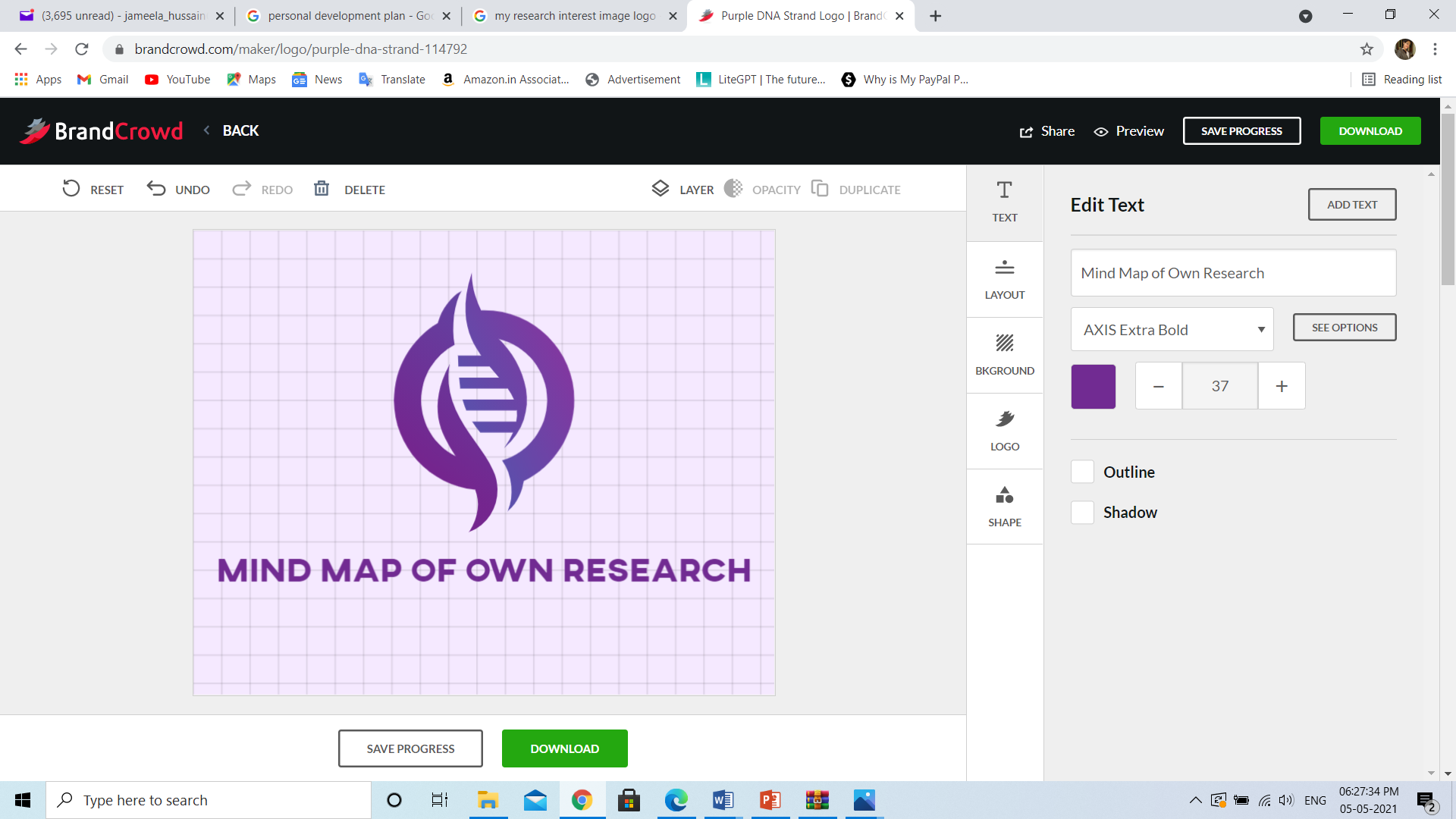
Mind mapping helps in developing core ideas that can complete the research proposal on time. It also assists in thinking of new ideas and designs that can make the research more constructive. Further, Mind Map can be used for the following purpose.
- To understand different possibilities related to the topic
- To generate new ideas about the specific literature topic.
- Defining a conceptual framework that will assist in conducting proper research.
2.6 Career Goal
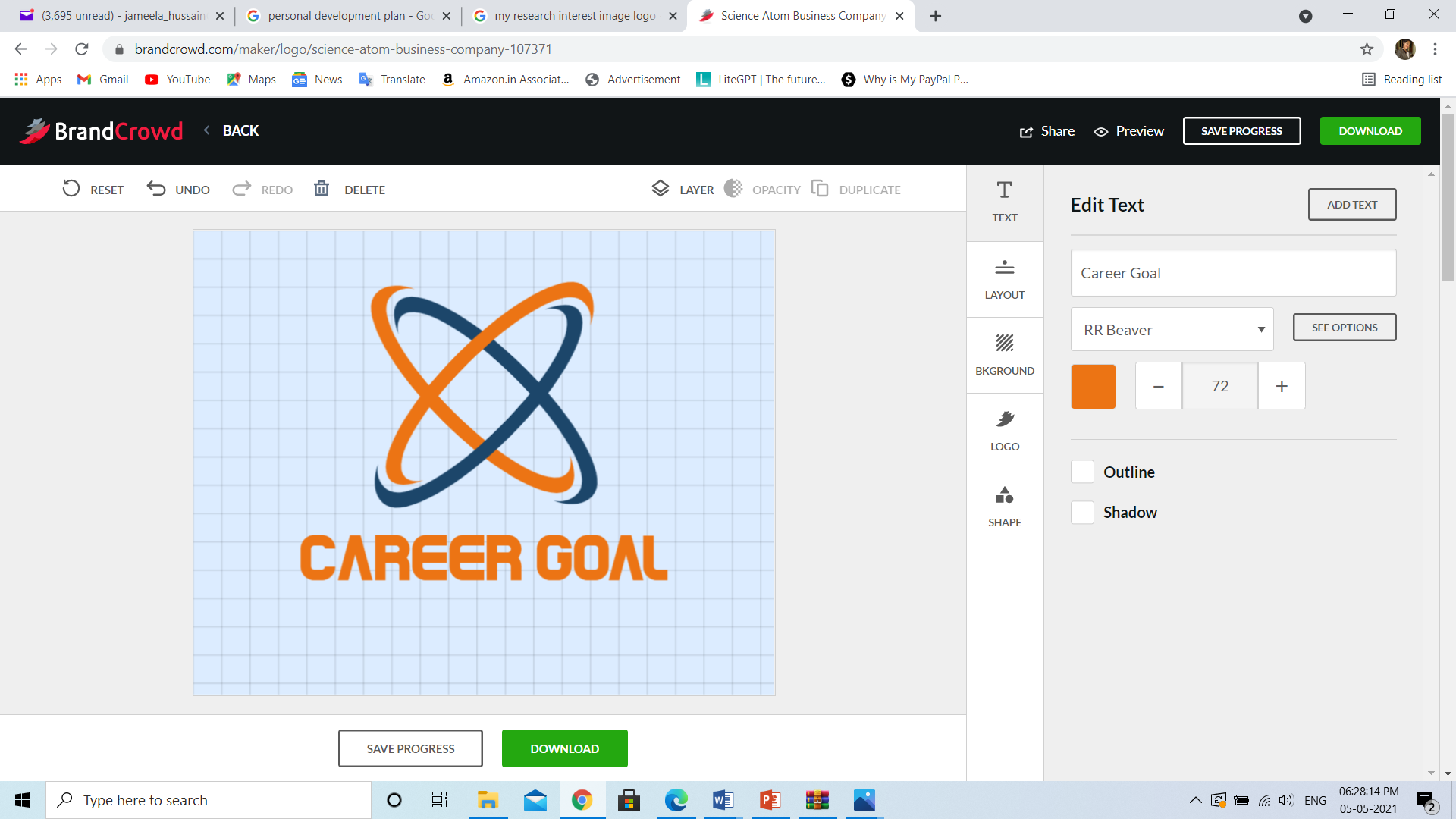
Career goal is a direction that helps an individual to pursue their career in respective fields. I was always passionate about pursuing my career in the IT field. Hence I want to see myself as a software engineer or web-based designer. I intend to develop my software web application with the help of practical and theoretical studies during my coursework. My immediate goal is to gain more and more knowledge about my project in the current semester.
2.7 Personality and Learning style
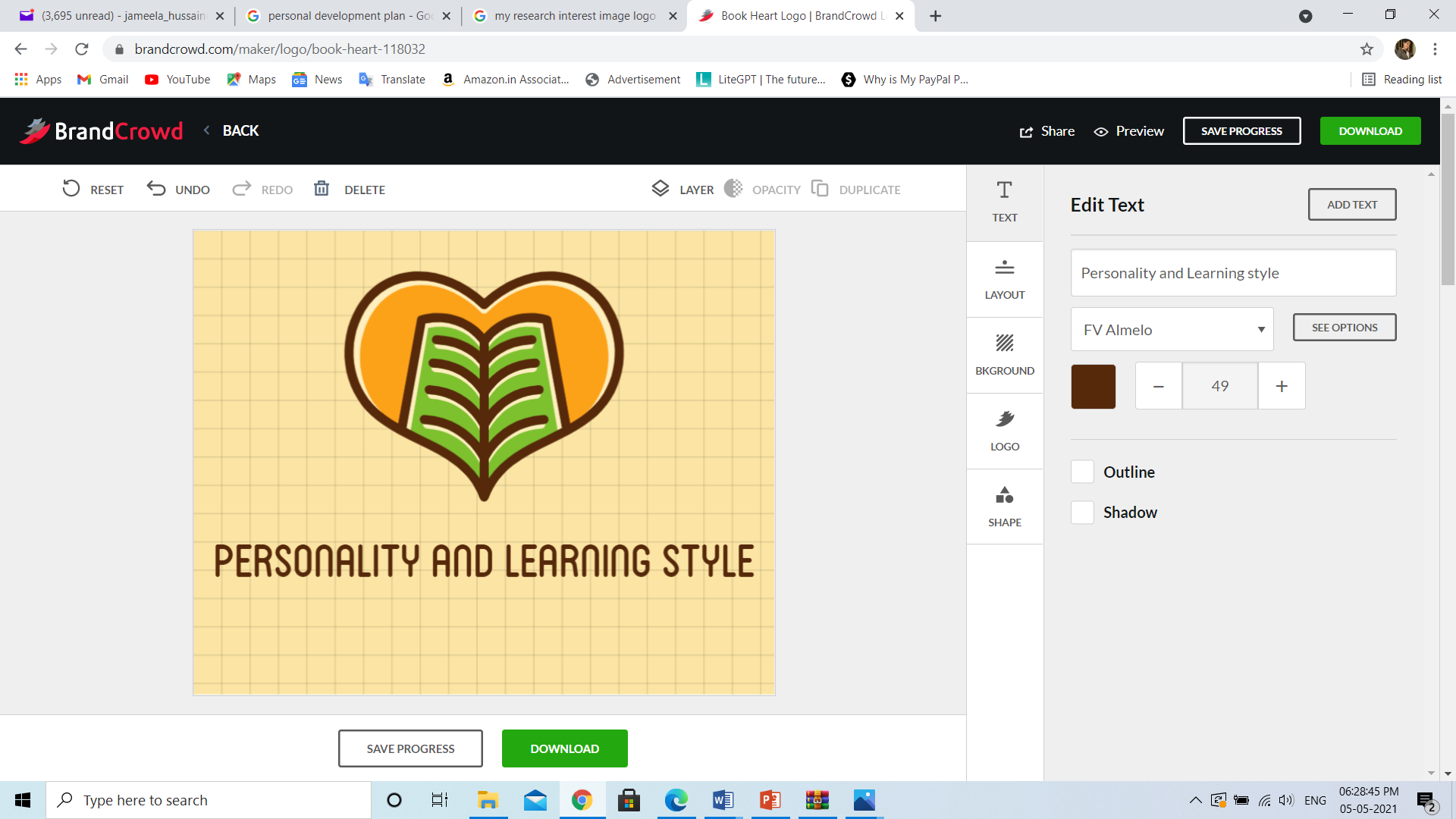
Every individual’s interest lies in different fields. Therefore it is necessary to identify one’s field of interest. Learning style helps a person to understand the strength and weaknesses underlying a person. Knowing strengths and weakness helps in acquiring knowledge more readily.
2.8 Project Initialization Form
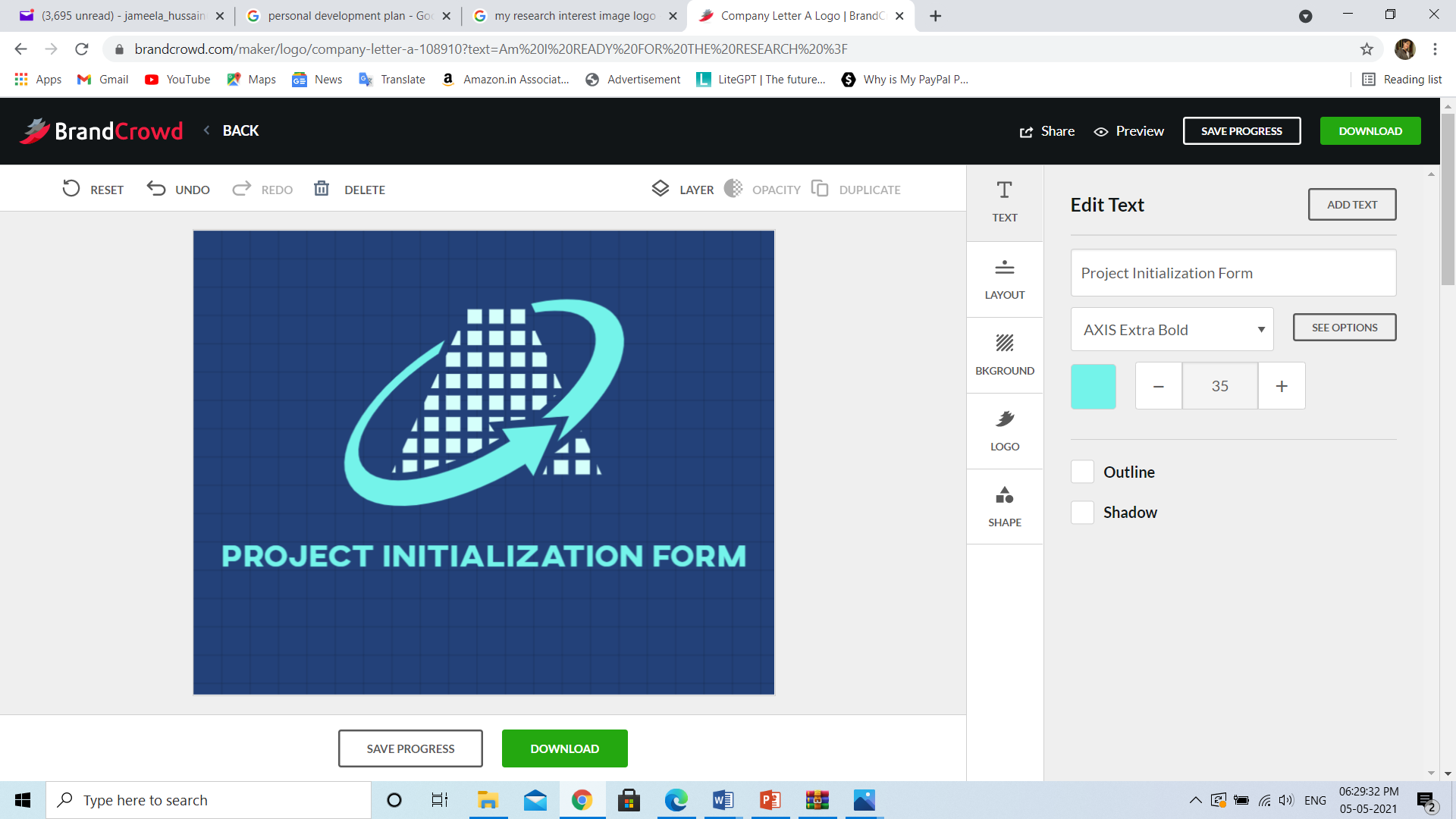
As the name suggests project Initialization form is a document that is filled in before submitting the proposal and dissertation. This form allows an individual to include the title of the dissertation. Further, aims and objectives are also included in the project initialization form.
2.9 Ethics and legal considerations
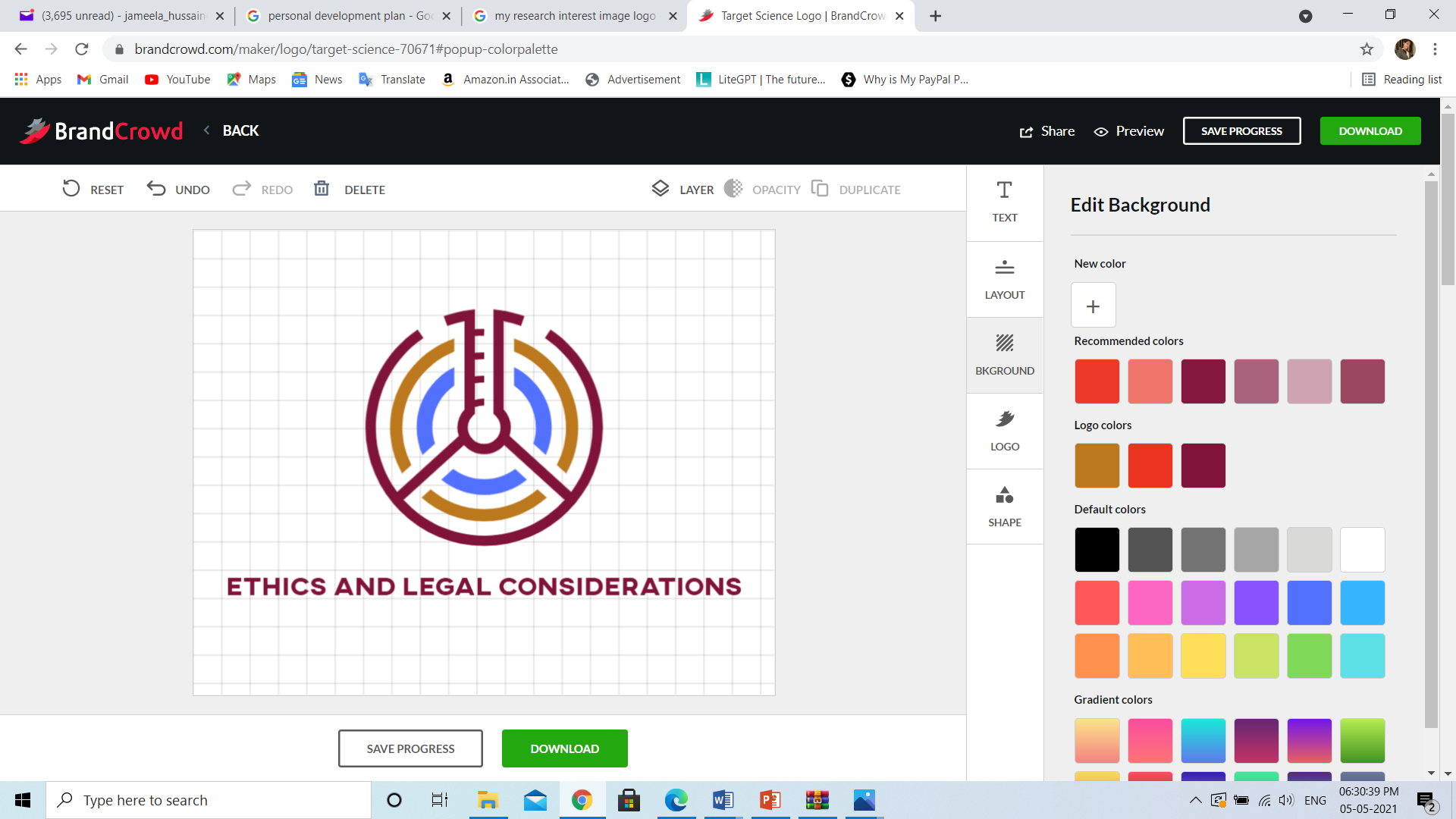
During the study process, I was successfully able to create the ethics and governance form, which was a part of my project. The form was designed to evaluate the level of risk associated with any IT project in the market. My project instructor provided me basic guidelines to fill this form correctly.
2.10 Legal Issues
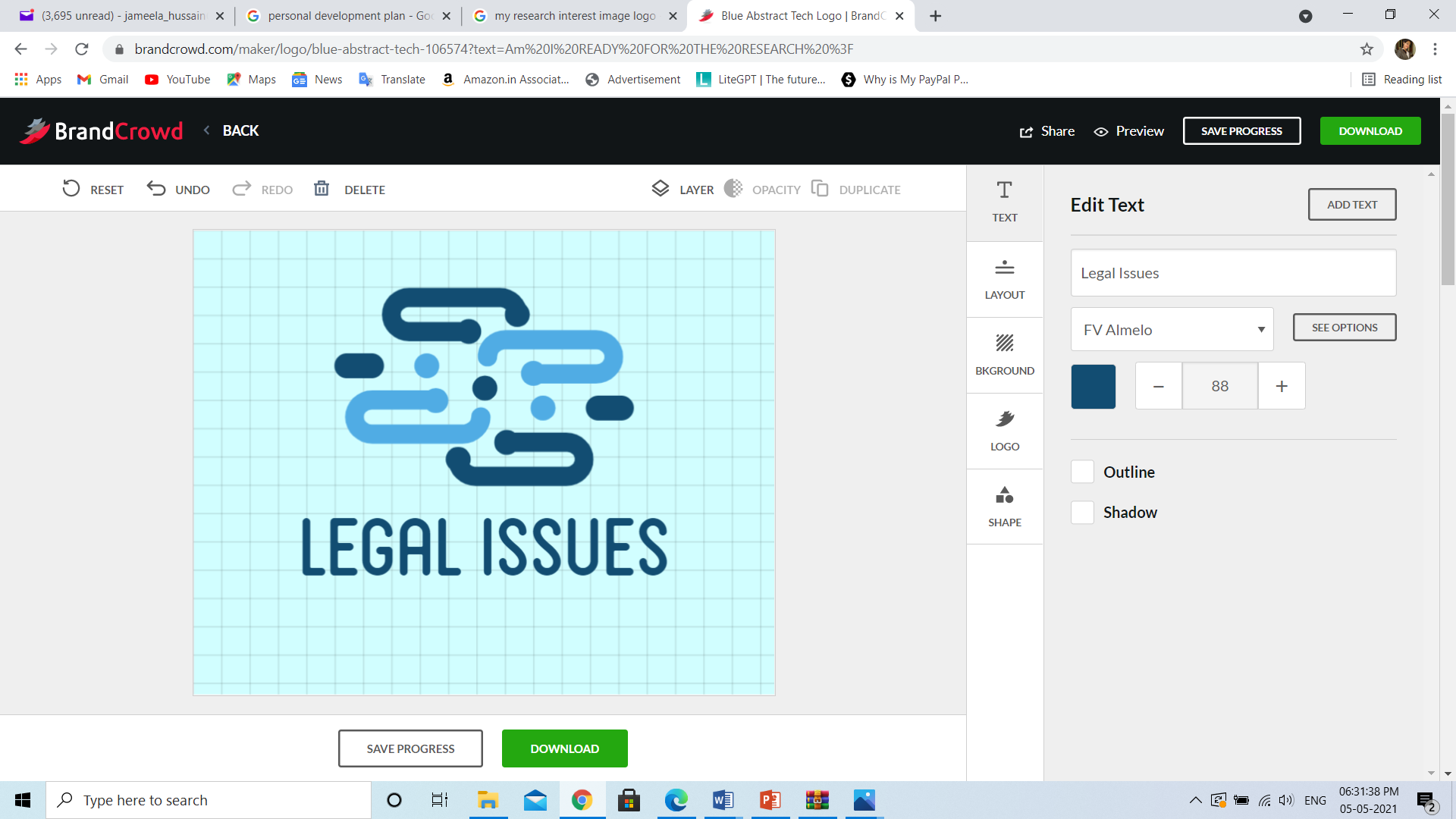
Irrespective of any project you undertake, there are different issues that can arise while completing the project. The problems can be social, ethical, and legal in nature. Legal issues can occur when programming and computing in the IT world. Legislation needs to be updated in order to address the legal issues. Ethical and moral values should be taken into account while handling telecommunication problems.
2.11 Gantt chart and project plans
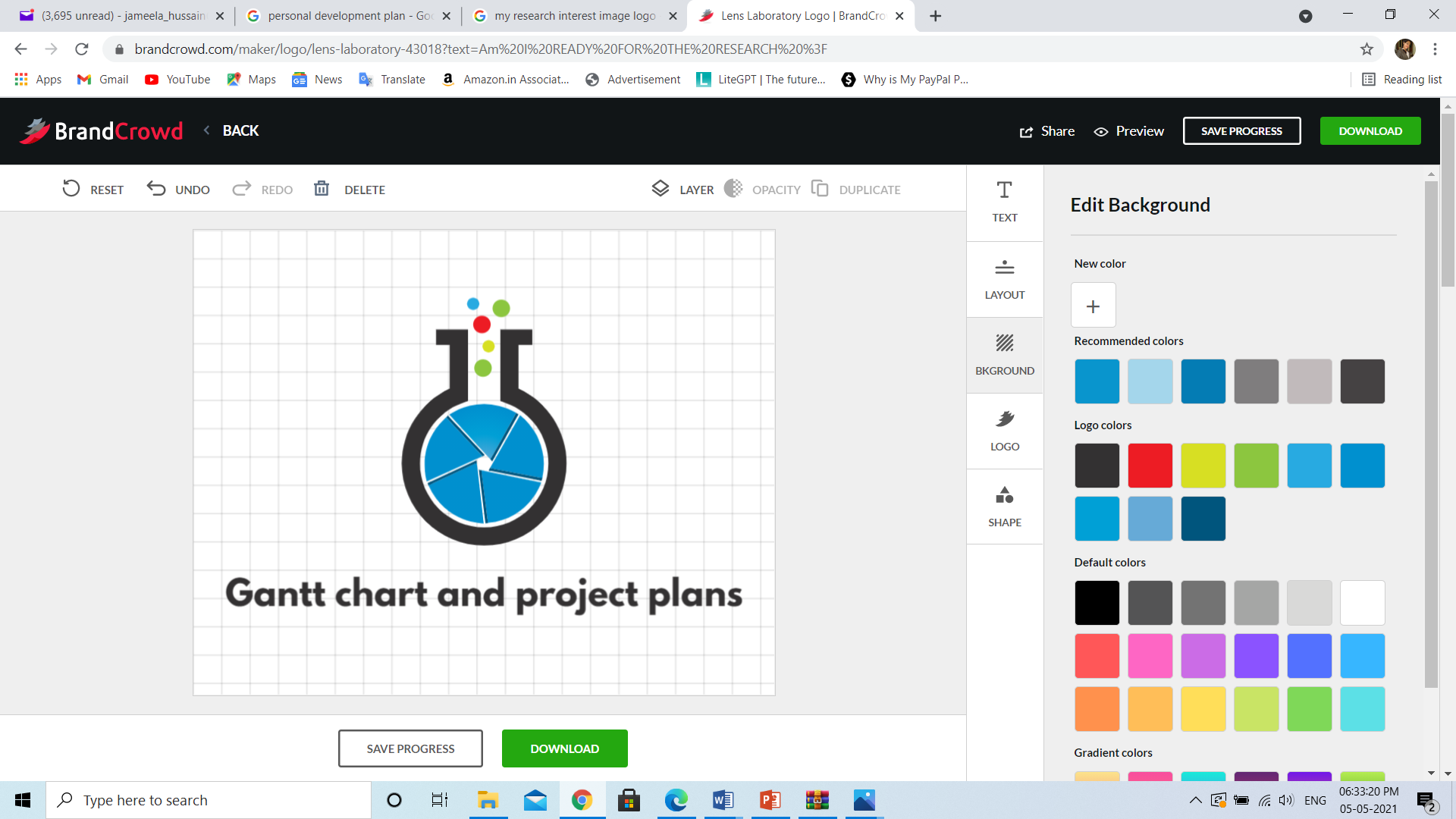
Defined planning for the research project is the key method in completing the study properly. Preparing a Gantt chart is the best way out to plan project strategy effectively. Gantt chart is a horizontal line form that requires you to update different sections of the research along with the time when it will be completed.
| Title | Weeks/Research actions | W1 | W2 | W3 | W4 | W5 | W6 | W7 | W8 | W9 | W10 |
| T1 | Project and Proposal discussion |
|
|||||||||
| T2 | Literature Review | ||||||||||
| T3 | Time Boxing | ||||||||||
| T4 | Time Boxing | ||||||||||
| T5 | Time Boxing | ||||||||||
| T6 | Time Boxing | ||||||||||
| T7 | Testing | ||||||||||
| T8 | Dissertation writing | ||||||||||
| T9 | Dissertation Finalization |
2.12 Risk Management
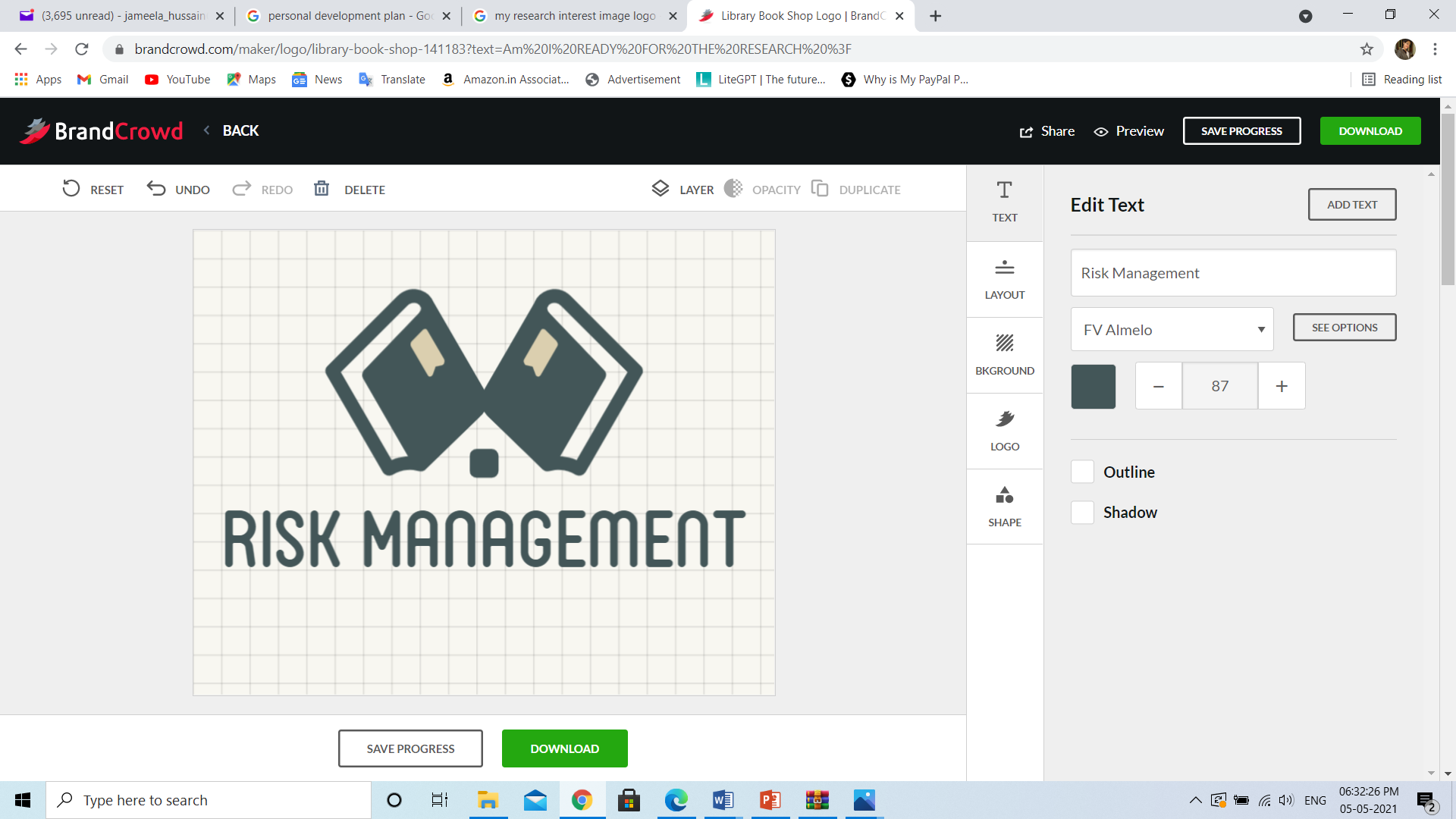
While preparing any project, it is essential to analyze the risks associated with it. After analyzing the chance, it is crucial to get approval and clarification from the supervisor. This will help in managing the project smoothly. Various risk management in my recent project are:
- Proper connection of the system should be made to gain maximum output out of it.
- Antivirus installation to safeguard the system.
- Proper training related to system usage and business process is provided to the employees.
- Internet protection with the help of robust passwords.
- Camera installation to track down the false activities.
Part Three: Project Proposal
Chapter 1: Introduction
1.1 Background
In 2019, the hospitality industry of the United Kingdom contributed around 59.3 billion pounds in gross value added to the economy, which was about 3% of the total economic output. There were 223045 identified to undertake operations of the hospitality sector within the UK as of 1st January 2020 (House of Commons Library, 2021). This comprises around 3.7% of businesses that are active within the UK at the moment.
The hospitality industry of the UK is made up of renowned five-star hotels to measure national budget brands. Domestic and international tourism has created a demand for hotels and other similar service accommodation that aims to cater to the tour belonging to the upper, middle, and lower scale.
The luxury hospitality segment is mainly situated within London, where the highest tourist traffic is seen along with driving economic wealth. The tourists who travel with a budget mind within the UK have turned to many peer-to-peer platforms such as Airbnb to find accommodations at a cheaper rate and try to gain a home away from home experience.
Search platforms have directly influenced the industry and its performance, but it is vital to know that they have increased opportunities for the service accommodation segments. The average hotel revenue per room has now reached over a hundred pounds in the UK. The hotel occupancy rate is 79.9%, among which the most popular hospitality chain is that of Premier Inn (Lock, 2020).
In recent times, the hotel industry has witnessed the integration of new and high technologies within its business processes. Artificial Intelligence and the Internet of things have played an essential role for the hospitality industry within the times of covid-19.
This is so because, with the help of artificial intelligence technology, the guests were able to undertake contactless check-in and checkout, which also help them to cater to the social distance in norms. T
he Internet of things within the hospitality industry is a network of digital machines and devices integrated through the Internet to enhance the experience of the guest and optimize their expenses. Apart from this, the Internet of things can be highly beneficial for the hotel industry and provide it with tons of possibilities along with on the side.
1.2 Contents
The contents of the report include a literature review, research methodology and planning, and conclusion.
1.3 Rationale
The project is worthwhile in relevant to the student as less computing because as mentioned above in the times of covid-19 hospitality industry almost came to a collapse, and it was because of these two technologies – Artificial Intelligence (AI) and Internet of Things (IoT) that it was able to undertake its operations. It has been identified that the impact left by the covid-19 pandemic on the Global economic operations is unalterable, and industries would have to revise new strategies so that they can sustain their operations in the post covid era.
AI and IoT are anticipated to be the pillars of the hospitality industry in the upcoming times. Hence, it develops an opportunity for the learner to study the technology in reference to the hospitality industry of the UK in order to understand their concept, relationship, and impact for providing recommendations on how to improve integration of these technologies within the business operations.
1.4 Aims and Objectives
Aim: to study Artificial Intelligence and the Internet of things in the hospitality industry of the UK.
Objectives:
- To analyze the concept of Artificial Intelligence and the Internet of things.
- To understand the role of artificial intelligence and the Internet of things in the hospitality industry.
- To investigate the impact of Artificial Intelligence and the Internet of things on the UK hospitality industry.
- To identify the future technological trends within the UK hospitality industry.
- To provide practical recommendations for integration of the Technologies within the business operations of the UK hospitality industry.
1.5 Research Questions
The research questions which will be solved by carrying out the present study are as follows:
- What are Artificial Intelligence and the Internet of things?
- What are the role of artificial intelligence and the Internet of things in the hospitality industry?
- How can Artificial Intelligence and the Internet of things impact the operations of the UK hospitality industry?
- What are the anticipated technological trends which may emerge within the business operations of the UK hospitality industry?
- What are the ways in which integration of these Technologies can be smoothly undertaken within the UK hospitality industry?
Chapter 2: Literature Review
2.1 Concept of Artificial Intelligence and Internet of Things
Dick (2019) artificial intelligence could be defined as the simulation of human intelligence embedded within the machines that are programmed to think as well as humans. The terminology can also be applied to any other machine portraying its characteristics and features like that of the human mind, such as problem-solving and learning.
Haenlein and Kaplan (2019) explained that the primary reason due to which AI was integrated within the business processes was that it is capable of undertaking dangerous and repetitive tasks, which will enable the human workforce to concentrate their creativity and energy on other things which are more important.
In addition to this, Nord et. al. (2019) identified that the Internet of things could be referred to as a network of physical objects or things that are embedded with software, sensors, and other technologies so that they can connect and exchange data with other devices with the help of the Internet. The primary purpose behind the Internet of things is to develop such devices that can self-report on a real-time basis while improving efficiency and disseminating important information to the surface in a quicker manner as compared to that of humans.
2.2 Role of Artificial Intelligence and Internet of Things in the Hospitality Industry
According to Pelet et. al. (2019), Artificial Intelligence and the Internet of things have played a significant role in the hospitality industry, especially during the times of the covid-19 pandemic. It has been found that in the post covid conditions, this technology would still be beneficial because they will provide touchless services along with ensuring social distancing so as to ensure the safety of guests as well as staff within the hotels.
For offering a contactless and touchless guest experience, it is essential that the major hotel chains adopt these Technologies and try to gain a competitive advantage in the new regular times.
Drexler and Lapré (2019) stated that with the help of technology, the guests would perform contactless check-in and check-out while maintaining social distancing and without coming in contact with the staff. In order to sync the devices of the hotels such as monitors, computers, tablets, and other Internet of things can be used to develop an intranet network that can facilitate the flow of information within all the connected devices in a streamlined manner without disruption.
2.3 Impact of Artificial Intelligence and Internet of Things on the UK Hospitality Industry
As per the views of Yang et. al. (2020), within the situation of the current pandemic, all the major service providers of the UK have built in their own technology platforms so that they can assist their guests while providing a safe environment and catering to their needs.
A lot of hotels have started rolling out those technologies, which will help them to become more energy-efficient along with undertaking the sustainability and corporate social responsibility outcomes for the business.
Nadkarni et. al. (2019) highlighted that the significant luxury and premium hotels had installed AI-powered thermostats. They tend to automatically adjust the temperatures of the AC and heating vent in reference to the weather outside. Room sensors also automatically detect the levels of light and are capable of reducing or increasing the brightness of the bulb as and when required.
In addition to this, digitization of the reports is also expected to smooth and the operations, which will be powered by the functions of the Internet of things.
As the current business environment of the hospitality industry is highly uncertain and unpredictable, there are chances that if secure technologies are used, the hotels within the UK would be able to control the operations within the day and maintain an activity report efficiently without involving themselves in tedious tasks.
2.4 Future Technological Trends within the UK Hospitality Industry
It has been found that the UK hospitality industry will undertake a lot of advancements within the technological field as the operations resume after the post covid era. The perception of Revfine (2020) Hyper personalized hotel rooms are identified to be one of the significant future Trends which is going to dominate the UK hospitality industry.
For instance, Marriott International and Hilton have experimented with their hotels with a connected room concept. This means that the guests would be given control of their room, which they can operate from their mobile phone or Tablet. This would include a heating system, ventilation system, and air conditioning temperatures, along with the feature of automatic regulation. The same technology can also be used to control the television, and some other devices are expected to respond by voice commands.
Another trend that is likely to take over the hospitality industry of the UK that of in-person customer service. AI-powered robots would be used for delivering customer service. Currently, these processes within the pipeline and basic customer-facing situations are being developed so that the reaction of these robots can be seen and evaluated to show that any changes can be made for rectification.
For example, Hilton has developed an AI-powered robot by the name of Connie. That robot is capable of providing information to the tour and also interacts with him on a friendly interpersonal level (Revfine, 2019). One of the distinctive features is that it also learns from human speech and tries to adapt to the guests. Hence, it can be said that the more interaction Connie makes, the more likely it is to improve, which expands the scope of opportunities for Hilton in the UK hospitality industry.
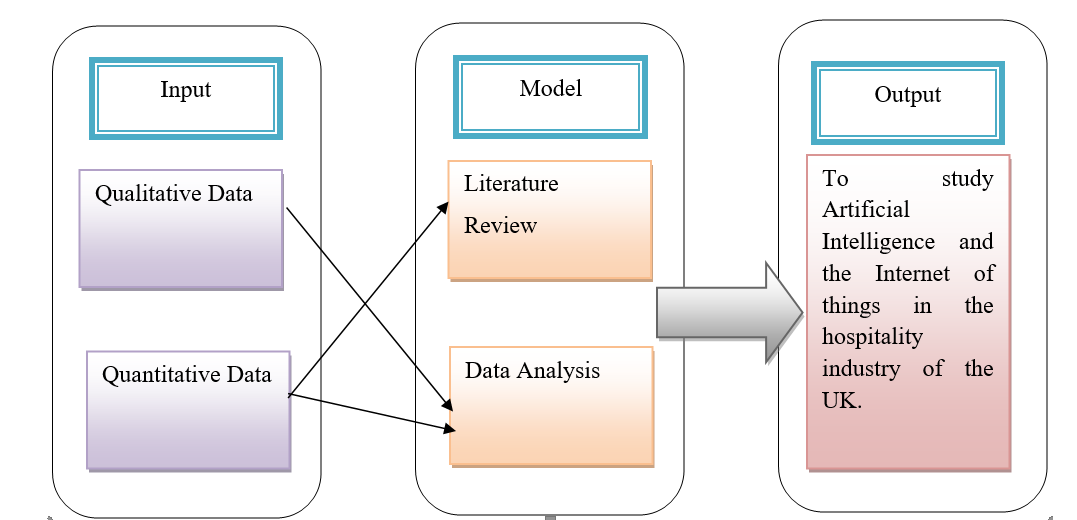
| Figure 1: Conceptual Framework for the Present Study
(Source: Created by Learner) |
2.5 Conceptual Framework
The conceptual framework of the present study is divided into the steps of input, model, and output. The input of the qualitative and quantitative data will undergo the models of literature review and meta-analysis to produce the output of adequate findings that show that the learner can study Artificial Intelligence and the Internet of things in the hospitality industry of the UK.
Chapter 3: Research Methodology and Planning
3.1 Research Methods
3.1.1 Research Design
The Research Design which will be used to carry out the present study is that of descriptive research design. The primary motive of this research design is to describe a phenomenon or situation in a systematic and accurate manner to the research topic. This design enables the researcher to identify the answers to the questions that commence with what, where, when, and how (Dźwigoł and Dźwigoł-Barosz, 2018).
The only problem with is faced by the researcher is that the individual is not able to answer questions why because the scope of descriptive Research Design doesn’t cover that. It enables the learner to use a wide variety of research methods to investigate the research topic, which might have one or multiple variables.
3.1.2. Research Approach
A deductive research approach is employed within the present study. This approach is associated with carrying out scientific investigation because the researcher has to reflect upon these studies of others and highlight the contents of the existing frameworks and theories for conducting an analysis.
The deductive approach can be used for quantitative data analysis. It usually involves the development of a reflection of the previous studies and checking whether or not similar results can be derived within the same.
3.1.3 Research Philosophy
Positivism philosophy is used within the present study because it describes a system that can find itself in the data and exclude metaphysical postulations. It also claimed that the social world could be evaluated in an objective manner (BairagiandMunot, 2019).
Thereby, when positivism research philosophy is implied, the researcher has to function as an objective analyst so as to associate self from personal values and bias in order to work independently on the data derived and findings developed.
3.1.4 Research Methodology
The mixed-method means a research methodology that is developed by undergoing systematic integration or mixer qualitative as well as quantitative data within a single sustained program of inquiry. It involves the tasks of collecting and analyzing, and integrating both types of data in a series of the pattern so that the same underline phenomenon on can be identified.
Researchers stand to use a mixed-method research approach so that they can use both the types of data together and try to derive results that are universally applicable within primary as well as secondary data. In other words, it can also be said that the researcher is to develop synchronization between qualitative and quantitative data by using them together in a single investigation and deriving results that have high reliability and validity for the long run (Daniel and Harland, 2017).
3.1.5 Data Collection Methods
Within the present study, data will be collected from primary as well as secondary sources. Primary data would be collected by using Google forms which are payable by their links and do not require physical proximity with the researcher in order to collect the desired data. The sample size would be 150 employees working within the UK hospitality industry.
A questionnaire survey would be developed using the tool of Google form, which will consist of a couple of questions, bifurcated into the sections of demographic questions and Research questions. After the data is collected, it will be analyzed, and a visual representation of the same will be created by using Microsoft Excel.
On the other hand, secondary data will be collected by segregating various studies which have been conducted on the relevant topics in reference to the research variables. These studies will be extracted using Google Scholar, the resource pool for all these studies published around the world, whether national or international. The studies might be books, journals, or other online publications.
It will be made sure that the studies which have been published in the year 2017 or after that are undertaken so as to ensure that they are not too old and are capable of reflecting the latest perspective. It is vital to know that while undertaking researches related to technology, it is always advised to undertake the latest information for analysis so that the researcher is able to predict the future trends within the market and understand the present ones.
3.1.6 Data Analysis Methods
Prescriptive data analysis will be used to carry out the project. This is so because this data analysis technique has been defined as the best combination of descriptive and predictive strategies. It helps the researcher to resolve the situations while taking into consideration the data which has been exclusively analyzed for deriving the required results (Mishra and Alok, 2017).
The information can be investigated while developing practical recommendations that can enable the business is to solve problems that they might be facing within the market environment. It also helps the researcher find the best course of action regarding the scenario considered by concluding from the findings gathered from multiple sources.
3.2 Project Plan – Gant Chart
| Tasks to be undertaken / Timeframe | 1-2 Week | 3-4 Week | 5-6 Week | 7-8 Week | 9-10 Week | 11-12 Week | 13-14 Week | 15-16 Week | 17-18 Week |
| Developing an Outline of the background of the study | |||||||||
| Conducting an extensive literature review for supporting the primary research | |||||||||
| Collecting primary data through the survey of the employees working within the hospitality industry of the UK | |||||||||
| Analyzing the data obtained from both the sources and developing findings by analyzing the information | |||||||||
| Final Evaluation and Interpretation of the results obtained. | |||||||||
| Development of practical recommendations for reducing the impact of the covid-19 pandemic on the Asda Stores Limited | |||||||||
| Submitting the 1st Draft of the research for review | |||||||||
| Integrating the Changes and feedback suggested by the supervisor for eliminating the errors | |||||||||
| Submitting the final research to mark the end of the project |
3.3 Assessment and Management of Risk
It is the responsibility of the researcher to identify the reasonable risks that might be encountered within the research and control them so as to make the results reasonably practicable. The risks which might be encountered within this study are as follows:
Anonymity and confidentiality: when the participants would be asked to present their responses in the Google form, it would be made sure that their personal details are settled as confidential and anonymous. This will be done by not asking personal questions from them within the questionnaire survey such as that name, phone number, address, or email ID. As they want Summit any personal details, the researcher won’t be a liability to disseminate any personal information and would not take the risk of barging anonymity and confidentiality.
Validity and reliability: it is the responsibility of the researcher to make sure that the data and information gathered are valid for an extended period of time (Worthington and Bodie, 2017). To ensure reliability, it is necessary only to inculcate that data that is verified and authentic instead of a hypothetical assumption.
Chapter 4: Conclusion
From the current report, it can be concluded that the ethical issues associated with the current project include informed consent, anonymity, confidentiality, validity, reliability, and voluntary participation. The legal issues that might be encountered in the later stages of the study would be copyright claims.
Social issues faced by the target audience of the UK hospitality industry would be the difficulty to adapt to the changes within the technology at a rapid pace. The professional issues encountered would be lack of training and development of the employees for using Artificial Intelligence technologies and the Internet of things within their daily tasks.
References
Books and Journals
Bairagi, V., and Munoz, M. V. (Eds.). (2019). Research methodology: A practical and scientific approach. CRC Press.
Black, P., (2016). Assessment for Learning: Putting it into Practice, pp.151-155.
Daniel, B. K., and Harland, T. (2017). Higher education research methodology: A step-by-step guide to the research process. Routledge.
Dawson, R., (2018). Doing Case Study Research: A Practical Guide for Beginning Researchers. 5(2), PP 350-353.
Dick, S. (2019). Artificial intelligence.
Drexler, N. and Lapré, V.B. (2019). For better or for worse: Shaping the hospitality industry through robotics and artificial intelligence. Research in Hospitality Management, 9(2), pp.117-120.
Dźwigoł, H. and Dźwigoł-Barosz, M. (2018). Scientific research methodology in management sciences. Financial and credit activity: problems of theory and practice, 2(25), pp.424-437.
Haenlein, M. and Kaplan, A. (2019). A brief history of artificial intelligence: On the past, present, and future of artificial intelligence. California management review, 61(4), pp.5-14.
Lawrence, F., (2018). Proposals That Work: A Guide for Planning Dissertations and Grant Proposals, 3(2), pp.96-100.
Mishra, S. B., and Alok, S. (2017). Handbook of research methodology.
Nadkarni, S., Kriechbaumer, F., Rothenberger, M., andChristodoulidou, N. (2019). The path to the Hotel of Things: Internet of Things and Big Data converging in hospitality. Journal of Hospitality and Tourism Technology.
Nord, J.H., Koohang, A. and Paliszkiewicz, J. (2019). The Internet of Things: Review and theoretical framework. Expert Systems with Applications, 133, pp.97-108.
Pelet, J.E., Lick, E. and Taieb, B. (2019, June). Internet of Things and artificial intelligence in the hotel industry: which opportunities and threats for sensory marketing?. In International Conference on Advances in National Brand and Private Label Marketing (pp. 154-164). Springer, Cham.
Worthington, D. L., and Bodie, G. D. (Eds.). (2017). The sourcebook of listening research: Methodology and measures. John Wiley & Sons.
Yang, L., Henthorne, T.L. and George, B. (2020). Artificial intelligence and robotics technology in the hospitality industry: Current applications and future trends. Digital transformation in business and society, pp.211-228.
Online
House of Commons Library. (2021). Hospitality industry and Covid-19. [Online] Available Through <https://researchbriefings.files.parliament.uk/documents/CBP-9111/CBP-9111.pdf> [Accessed on 5th May 2021]
Lock, S. (2020). Hotel industry in the United Kingdom – Statistic & Facts. [Online] Available Through <https://www.statista.com/topics/3146/hotel-industry-in-the-united-kingdom-uk/#dossierSummary> [Accessed on 5th May 2021]
Revfine. (2019). How the Internet of Things (IoT) can Benefit the Hospitality Industry. [Online] Available Through <https://www.revfine.com/internet-of-things-hospitality-industry/> [Accessed on 5th May 2021]
Revfine. (2020). How to use Artificial Intelligence in the Hospitality Industry. [Online] Available Through <https://www.revfine.com/artificial-intelligence-hospitality-industry/> [Accessed on 5th May 2021]
Know more about UniqueSubmission’s other writing services:


